Vegetable gardening doesn’t have to end with the first frost, you can grow fall and winter vegetable gardens in almost any climate. By planting frost tolerant plants you can extend your harvest well into the fall and winter. Here are my favorite 15 cold weather plants for the fall and winter vegetable garden.
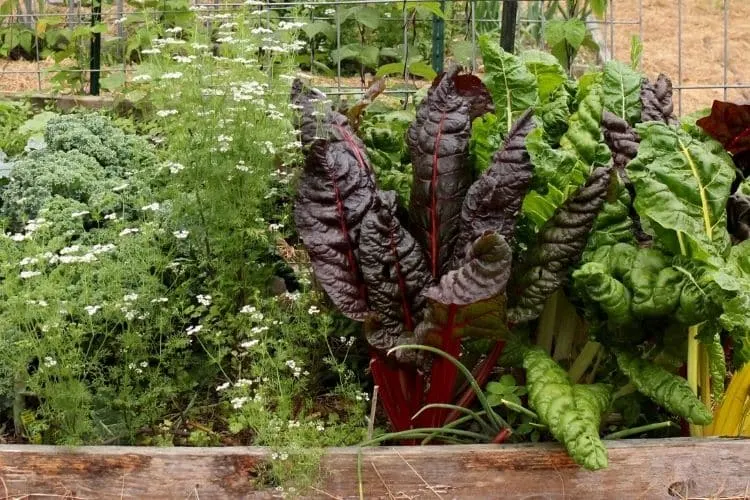
What does frost tolerant mean?
Frost tolerant and cold hardy are not really the same thing, although they are often used interchangeably.
Frost tolerant means that the plant can tolerate ice crystals (frost) on it’s leaves with minimal damage. Cold hardy is the lowest air temperature a plant needs to survive, any lower and it will die.
A plant that is cold hardy to 26F but not frost tolerant can die if the temperature is higher than 26F but there’s frost.
Where I live it’s pretty humid so if it freezes, we almost always get frost. If you live in a drier climate that might not be the case for you.
Here’s a good article from The Farmer’s Almanac about what causes frost and it’s affect on plants.
Frost protection for plants
If you live where you get 10 feet of snow for nine months of the year, you are going to need some kind of green house to grow food through the winter in. Anna from The Northern Homestead lives in a gardening zone 3A (which means it’s cold most of the year) and has some great tips on growing food year round.
If temperatures go below 26°F you can use frost cloth or covered row tunnels to protect the plants. Even if it snows you should be able to grow these plants with protection. If you want to.
Obviously it’s more work for a winter garden when it snows all winter than when you only get a couple of freezes, but it is possible.
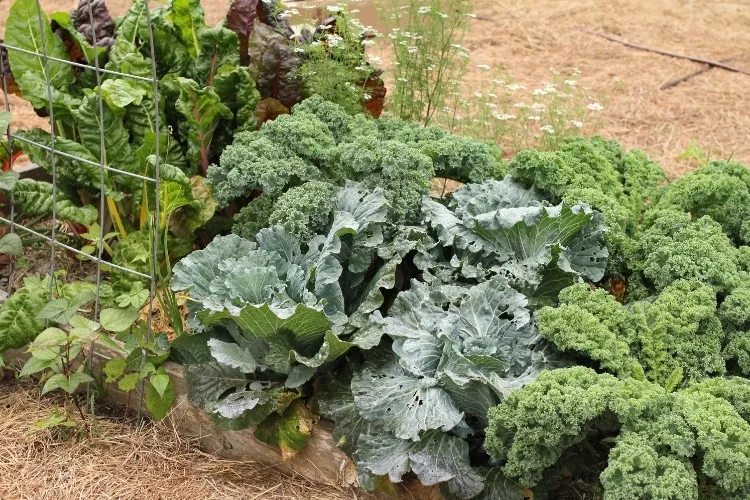
Benefits of a fall and winter garden
The fall and winter garden is my favorite garden because it’s not as overwhelming to me as the spring/summer garden is. I can harvest what we need for the day and leave the rest for another day without worrying that it will rot on the vine.
By succession planting I can make sure that the vegetables mature at different times so I don’t have 30 heads of cabbage to deal with in one week.
There is also less pest and disease pressure in the fall and winter garden. And, of course, it’s not as hot as the summer so it’s just more enjoyable to be in the garden during the fall and winter.
I like to use planting worksheets to determine how much of each plant to grow for our family’s needs. You can get a copy of the worksheets emailed to you by filling out the form below.
Fall and winter vegetables to grow
Not only can you grow these frost tolerant plants in the fall and winter garden, they’re also great to grow in the early spring garden because they won’t be affected by any late frosts you might get.
Carrots
Carrots, beets, kholrabi and turnips actually improve in flavor after a frost. After the first hard frost, cover the root crops with an 18″ layer of straw or shredded leaves.
Even if the greens die back, as long as the ground is workable you can continue to harvest the roots through the winter.
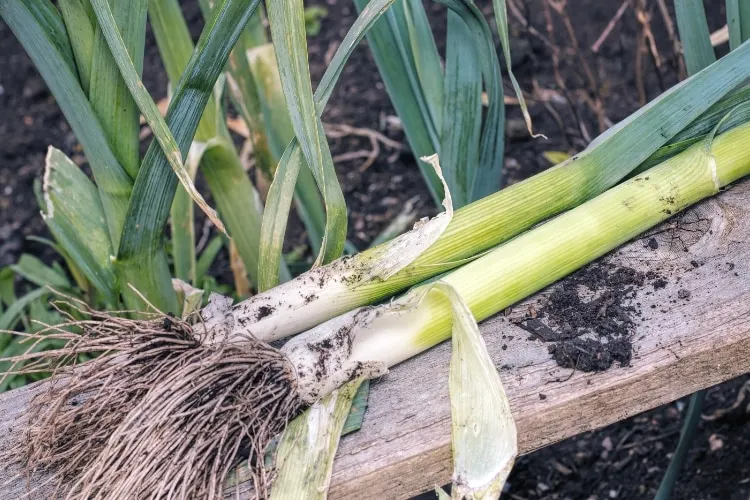
Leeks, chives, and onions
Leeks are similar to the root vegetables in that you can mulch them with about 18″ of straw or shredded leaves to be able to harvest all winter.
Chives can be planted any time but in our climate they do well with a fall planting. They will continue to produce all year long.
Onions do well in the cool weather. Bulb onions can be planting in the fall and will be ready for harvest in the summer. But green onions or repeater onions can be harvested all year long.
Hardy Greens
Swiss chard and kale are some of the most important vegetables to grow in your garden. They are both packed with nutrients and both are heat and cold hardy.
Kale can tolerate cold to 10°F and Swiss chard can tolerate cold into the teens. They can also tolerate temps above 100 degrees Fahrenheit, so in many zones you can grow chard and kale all year long.
They are the workhorses of my garden.
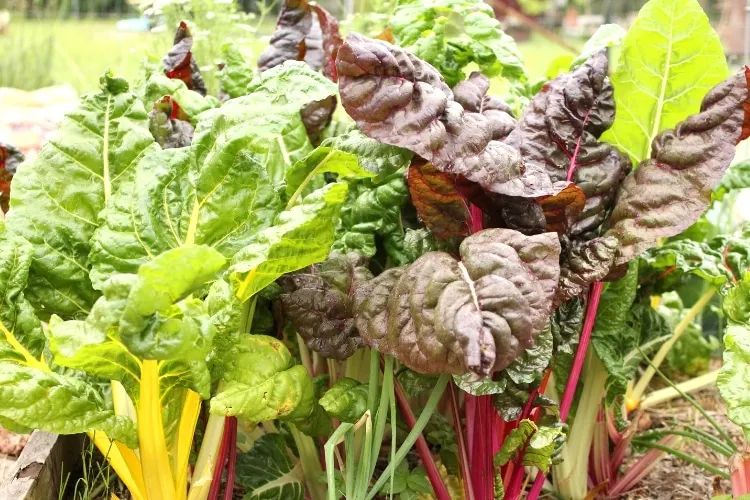
Spinach and corn salad are the hardiest of salad greens. Spinach can survive to 15°F and corn salad to 5°F! The edges of the spinach leaves might brown, but we just cut those off.
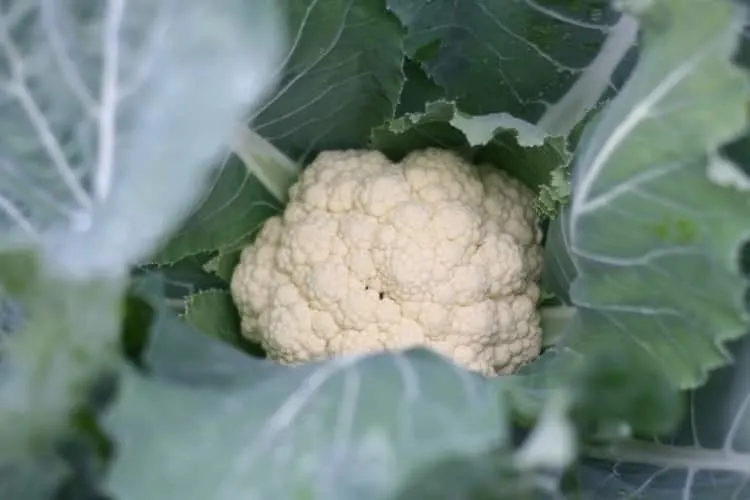
Brassicas
Brussels sprouts, broccoli, cauliflower and cabbage are brassicas (also called Cruciferae) and the plants in this species are wonderful for the fall/winter garden.
In fact, you can continue to harvest Brussels sprouts even after a snow. Broccoli, cauliflower and cabbage are tolerant to about 26°F.
Herbs
Parsley and cilantro are surprisingly very cold hardy. Cilantro will survive temps into the low 20’s and parsley to about 10°F. And lest you think parsley is just for garnishing in restaurants and not really worth your time to grow, you should know that it’s great for soups, you can make a pesto with it, and it is a nutritional powerhouse.
Because we love using cilantro all year I grow a lot of it and then freeze it since it’s too hot for cilantro here in the summer.
There are several ways to freeze herbs but for cilantro I just put it in a ziplock bag and toss it in the freezer. When we make salsa with our summer tomatoes I break off a chunk of cilantro and blend it with the tomatoes.
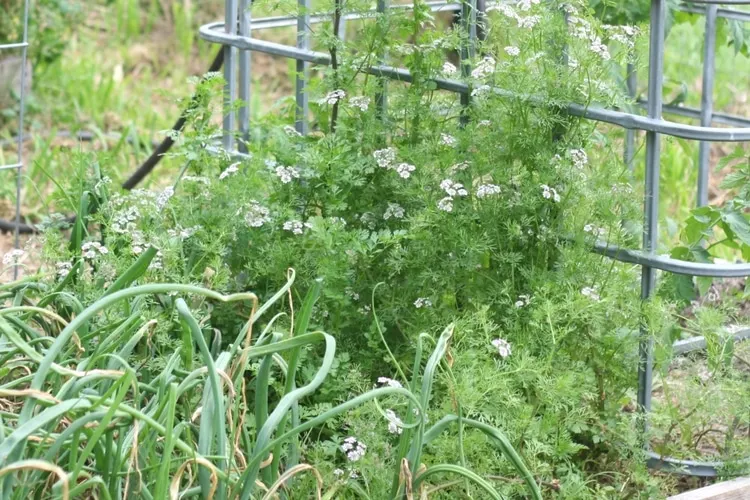
Seeds for the fall and winter garden
My favorite place to buy seeds is from MIGardener which sells only non-GMO seeds and most are just $1 a packet. If you use this link, you’ll get a 10% discount.
If they don’t have what you’ looking for try other places like Botanical Interest or your local feed store.
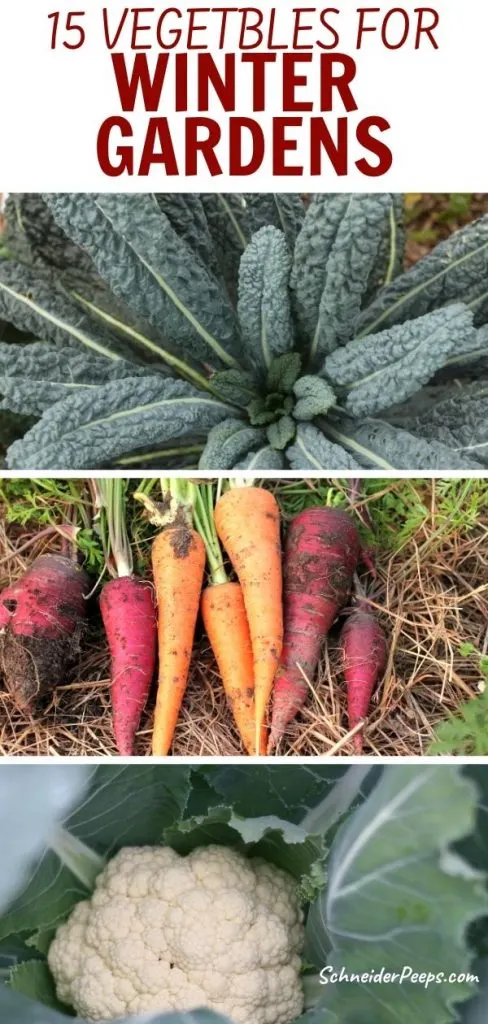
Are you getting your garden ready for the fall/winter? I’d love to hear about it!

Joy
Thursday 31st of August 2023
Thank you for the advice! I am eager to replace my leggy tomato and cucumbers with some tall veggies! I can’t wait to receive the worksheets. Thank you again for the help! Joy
Lillie Mae Washington
Tuesday 13th of December 2022
Thank you for sharing this information I'm a real amateur but it's worth it I have hopes to help my neighbors with the prices of fresh produce so high we all as neighbors should plant gardens in our yards including fruit trees which I plan to do.
Pamela
Friday 15th of October 2021
This will be my first time to winter garden, I have a small 5x5 green house and am looking forward to getting my seeds sown. I live in zone 8 and was wondering if my tomato plants that I transplanted into grow bags will still produce with a grow light and heat source in place in the green house?
Angi Schneider
Tuesday 19th of October 2021
I've never grown in a green house so I don't know for sure but in theory they should still produce. It might take longer for the tomatoes to ripen though.
Johanna
Saturday 3rd of August 2019
Hi You left out snow peas. As the name implies they can take some snow but they would be fine under a garden blanket. You can also grow alpine strawberries. They tolerate cold and are the first berry to produce in spring. The berries are the size of wild strawberries but they are prolific until heavy snow covers them. You can grow them from seed. They don't produce runners. They are pretty and tidy. I plant them in my flower garden. Growing in zone 3 for winter crops is a lost cause. We get snow in late August and in late June. By mid September we are in the -20s and even in the low hoops and glass (cold frames) the ground is frozen and I spent 45 minutes which a hammer and large screw driver hacking out a leek and carrots for soup. I saved one carrot for later but it was mush when it thawed out. I will not be trying that again.
Angi Schneider
Tuesday 6th of August 2019
Thanks for the tips! I'll have to add those two into the post.
Molly
Friday 2nd of August 2019
Definitely planting beets, kale, corn salad, and more spinach.